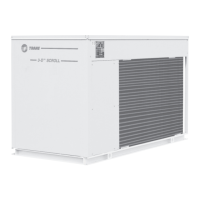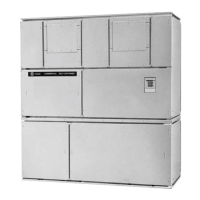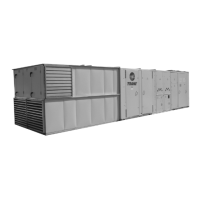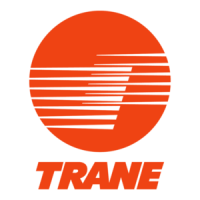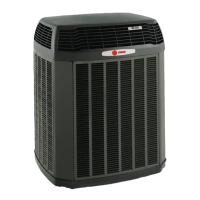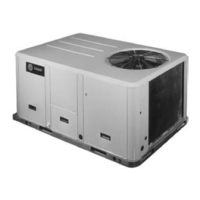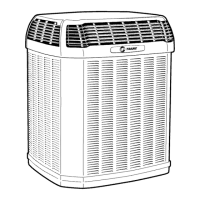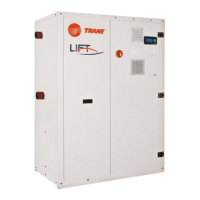10 RAU-SVX01F-E4
Electrical connections
CAUTION!
1. The greatest care should be taken
when cutting through passages
and installing electric wiring.
Under no circumstances should
chips of metal or cuttings of
copper or isolating material fall
into the starter panel or electric
components. Relays, contactors,
terminals and control wiring
should be covered and protected
before power supplies are
connected.
2. Install power supply cabling
as shown in wiring diagram.
Adequate cable gland should
be chosen, ensuring no foreign
bodies enter the electrical housing
or components.
3. Cabling must comply with
standards in force. The type
and location of fuses must also
comply with standards. As a
safety measure, fuses should be
visibly installed, close to the unit.
4. Only copper wiring should be
used. Using aluminium wires can
produce galvanic corrosion and
possibly lead to superheat and
failure of connection points.
As standard, Trane provides the
single power supply which includes
the transformer. Warranty reserves
will be formulated if a transformer,
not supplied by Trane, is installed
inside the electric panel.
Temperature sensor
Two temperature sensors are
provided, in the control panel of
the unit. They have to be fitted on
site in order to measure the air inlet
and outlet temperature downstream
to the DX coil (evaporator). Refer
to supplied wiring diagram for
connection of sensors.
To place the sensor into the airflow,
the technician will have to cut the
cable between the electronic case
and the sensing element, and then
reconnect both elements with a
twisted pair cable with a maximum
distance of 300m.
Hot gas-bypass control
(option)
The hot gas bypass option only
provides a relay contact needed
to initiate hot gas bypass on the
evaporator. All the refrigerant piping
modifications are not done in the
factory and have to be done on the
jobsite. An additional refrigerant line
and solenoid valve must be added
on site (not provided) between the
discharge line and the suction line
on Circuit 1. When the solenoid
valve is activated, refrigerant vapor
will flow from the discharge line
to the suction line. This refrigerant
vapor satisfies the compressor mass
flow requirement, but because no
phase change has occurred, this flow
does not contribute to unit capacity.
The amount of capacity shed by the
hot gas bypass line depends upon
the size of the line (restriction) and
the pressure difference between the
discharge line and the suction line.
Closing the solenoid valve in the hot
gas bypass line deactivates hot gas
bypass.
Figure 3
1 = Air intake
2 = Fan
3 = Evaporating coil
4 = Air supply
5 = Evaporator leaving
air temperature sensor
6 = Evaporator entering
air temperature sensor
7 = Thermostatic expansion valve
8 = Sight glass
9 = Manual shut-off valve
10 = Filter dryer
11 = Liquid solenoid valve
Installation
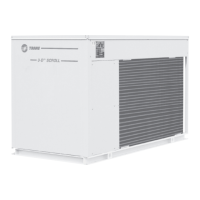
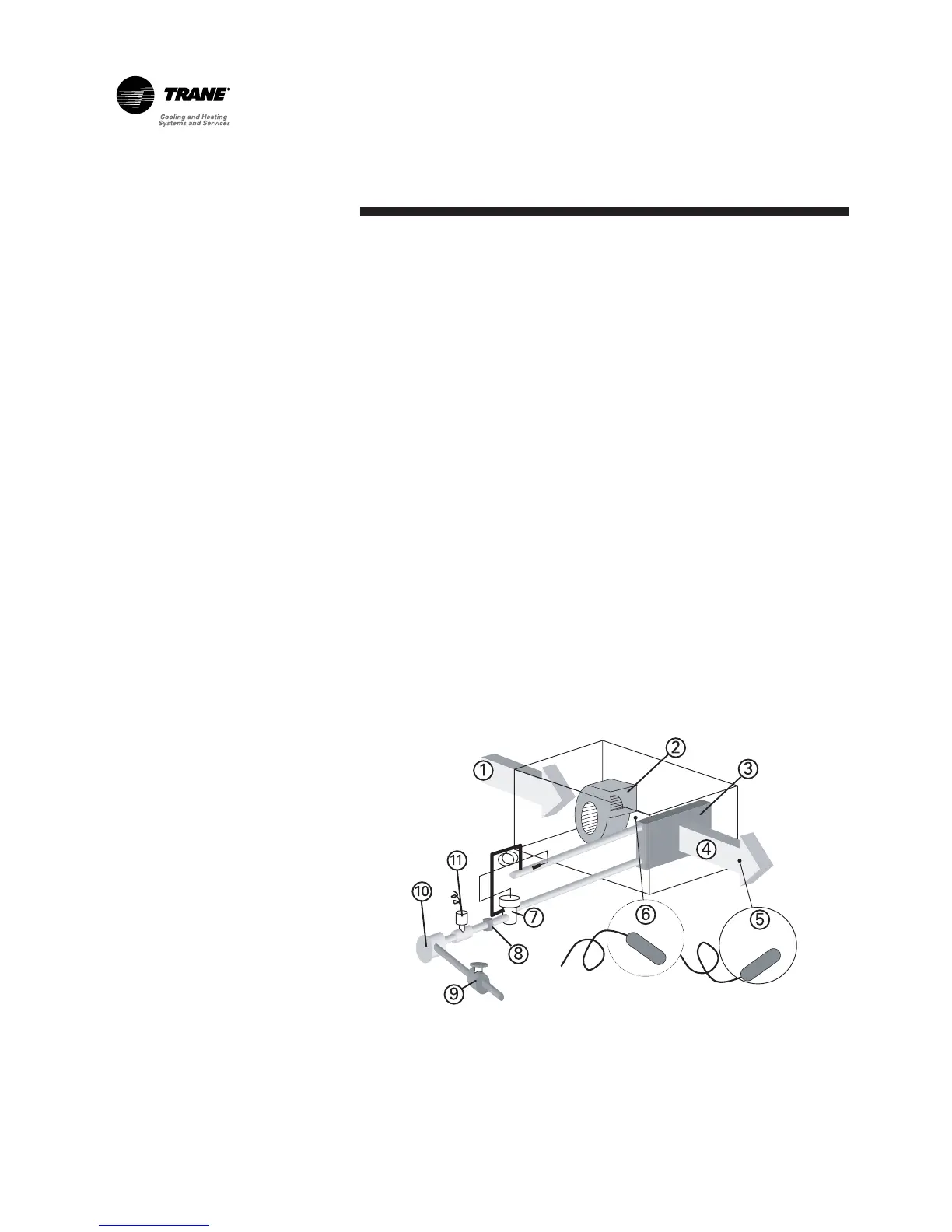